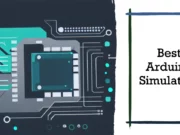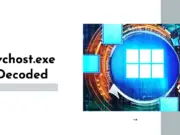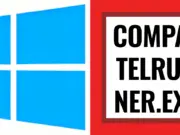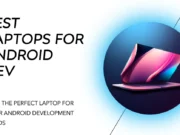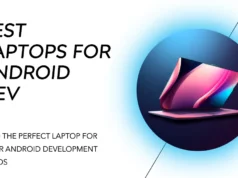Why do you want to use a tablet with HDMI input in the first place? This is no ordinary tablet. Using the device helps you listen to decent audio and watch explicit videos, and they are also compatible with other devices like PC, laptops, and smart TV.
You can also use the tablet for presentations and conferences. They can make a difference with their second-to-none features embedded in them.
These devices come with high-quality dual speakers, 1080p Full HD screens, and dual cameras.
Today, you can find them with extended storage space and dual-band Wi-Fi connectivity. A tablet with HDMI input lets you see videos in exceptional visuals, read documents conveniently, listen to flawless audio files, and do more with it.
You can also use them for live streaming your favorite games and shows from Prime, Netflix, and others.
If you like to play games, then you can do so seamlessly. You can listen to songs from Pandora with superior clarity for those who prefer music.
Best Tablet With HDMI Input – Our Top Picks👌
Let’s dig into it without wasting time.
1. Fusion5 FWIN232 Plus N4120
Are you in the market for a high-quality tablet with HDMI input? Look no further than the Fusion5 FWIN232 Plus N4120 Ultra Slim Windows Tablet PC!
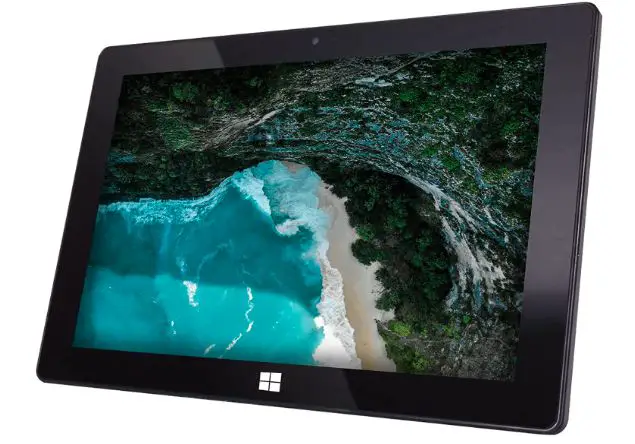
Its 10″ IPS HD display, 4GB of RAM, and blazing-fast Intel Quad-Core CPU make it the ideal tool for multitasking and streaming movies.
The HDMI input on this tablet, which enables you to connect it to external monitors for a larger, more immersive viewing experience, makes it unique.
With the HDMI input, sharing your material with others is simple whether you’re giving a presentation, viewing a movie on a big screen, or want to.
The Fusion5 FWIN232 Plus N4120 supports HDMI, USB 3.0, and Bluetooth, making it simple to transfer files and connect to other devices. You can easily take beautiful pictures and videos with its 5MP and 2MP cameras.
The Fusion5 FWIN232 Plus N4120 Ultra Slim Windows Tablet PC is a flexible, high-performing gadget ideal for anyone seeking a tablet with an HDMI connection.
Take advantage of this fantastic chance to improve your tablet experience by not passing it up!
Pros:-
- Use the premium 10″ IPS HD display for sharp, clear visuals.
- A potent Intel quad-core processor and 4GB of RAM are used for quick performance and seamless multitasking.
- For a more expansive viewing experience, HDMI input makes it simple to connect to external screens.
- Easy file transfer and device connection with USB 3.0 and Bluetooth connectivity
- Taking high-resolution pictures and videos with 5MP and 2MP cameras
Cons:-
- It runs Windows 10, not Windows 11, even if it isn’t mentioned in the product description. This can be a drawback for some customers who want the most recent operating system.
- The lack of a built-in speaker or microphone in the tablet’s product description may be a drawback for some customers.
- The product’s battery life is not mentioned in the product description, which may worry some users.
2. Microsoft Surface Go 3
Do you require an HDMI-capable high-quality tablet? The Microsoft Surface Go 3 is the only option.
With a 10.5″ touchscreen display, an Intel® Pentium® Gold processor, and 8GB of RAM, this cutting-edge laptop is ideal for multitasking and streaming media.
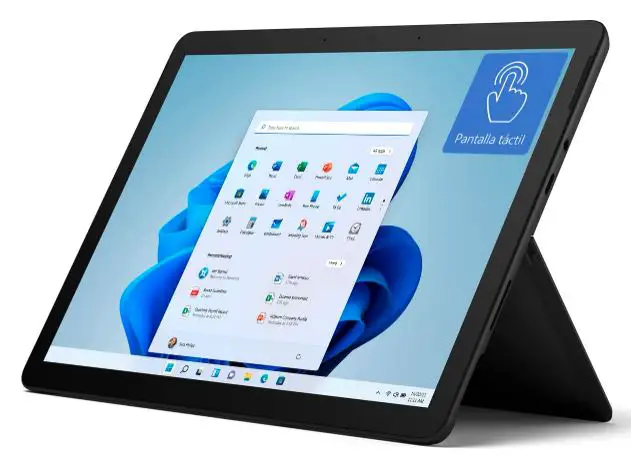
The Surface Go 3’s HDMI input, however, is what makes it stand out because it enables you to connect it to other monitors for a larger, more immersive viewing experience.
With the HDMI input, sharing your material with others is simple whether you’re giving a presentation, viewing a movie on a big screen, or just want to.
The Surface Go 3 has a huge 128GB SSD, which offers plenty of storage for your documents, pictures, and media, in addition to its HDMI capabilities. Additionally, its modern, black design will turn heads wherever you go.
The Microsoft Surface Go 3 is a top-of-the-line tablet with HDMI input, making it ideal for anyone searching for a powerful, adaptable device.
Take advantage of this fantastic chance to improve your tablet experience by not passing it up!
Pros:-
- 10.5″ touchscreen display of exceptional quality for engaging viewing
- For quick performance and seamless multitasking, a potent Intel® Pentium® Gold CPU and 8GB of memory are required.
- For a more expansive viewing experience, HDMI input makes it simple to connect to external screens.
- Ample storage capacity is provided by a large 128GB SSD.
- Any set will look more professional with the sleek, black design.
Cons:-
- The Surface Go 3 is a device only; it does not include a keyboard or stylus, as is stated in the product description. These extras must be bought separately.
- The product’s battery life is not mentioned in the product description, which may worry some users.
- The lack of a built-in speaker or microphone in the tablet’s product description may be a drawback for some customers.
3. SAMSUNG Galaxy Tab S7 FE
The SAMSUNG Galaxy Tab S7 FE is an excellent tablet to consider if you’re looking for one with HDMI input.
Its 12.4-inch screen, 256GB of storage, and long-lasting battery make it the ideal choice for your entertainment and productivity demands.
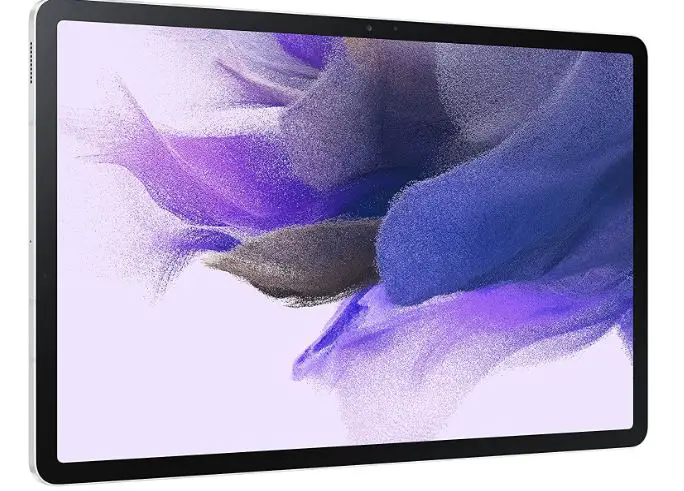
You may also effortlessly take notes, draw sketches, and doodle to your heart’s delight using the S Pen that comes included.
Additionally, thanks to its multi-device compatibility, connecting your other devices and streaming your preferred content on the big screen is simple.
Then why wait? Enjoy all the advantages of a tablet with HDMI input immediately by upgrading to the SAMSUNG Galaxy Tab S7 FE!
Pros:-
- Streaming video and other materials look excellent on a big, high-quality screen.
- Your favorite movies, TV shows, and other items can all be stored thanks to the ample storage capacity.
- Thanks to the long-lasting battery, you may use it for a long time without recharge.
- Writing and drawing with the S Pen is precise and natural.
- Connecting to other devices and sharing material is simple, thanks to multi-device connectivity.
Cons:-
- Possibly more expensive than competing tablets on the market Possibly lacking
- several high-end tablets’ features and capabilities
- some apps and software might not be compatible
4. Fire HD 10 Tablet
If you have used tablets, then you might have heard about it. The Fire HD 10 Tablet is one of America’s most commonly used devices.
The Fire HD 10 is the latest product from the Fire series. It comes with a 30% speed than the older product. The device runs on a 2.0 GHz octa-core processor. This gives it immense power to be able to multitask exceptionally.
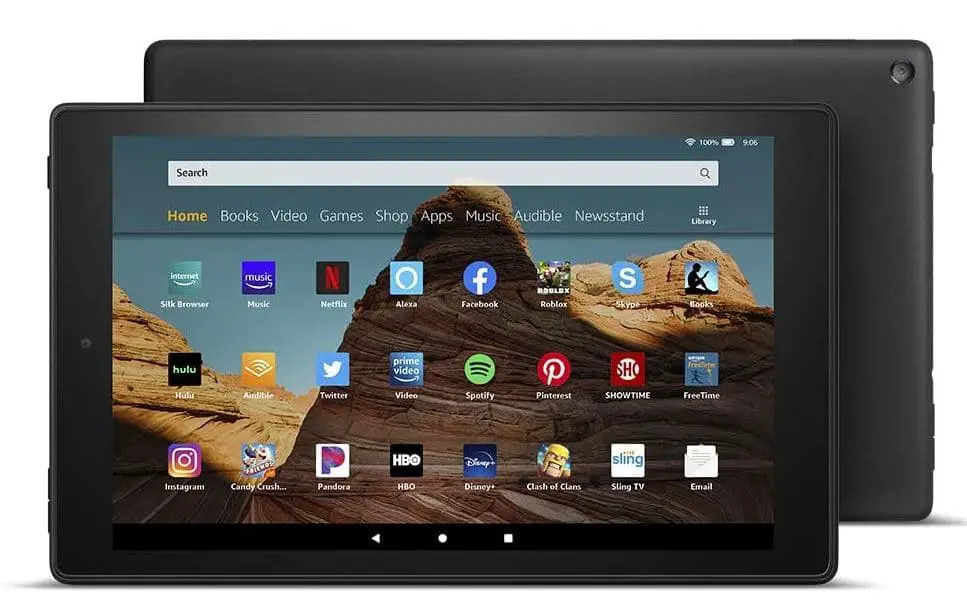
We also liked the design of the screen. It has a 10.1-inch monitor is large enough to perform most of your work. You can read, watch videos, and use them for presentations during meetings.
The screen also comes with an HD display of 1080p. It is perfect for gaming purposes. Users have two options 32GB and 64GB storage space. We were satisfied with it. The memory is good at 2GB RAM for you to work on it effortlessly.
You can extend the tablet’s storage space to 512GB using the microSD card. The battery duration was outstanding at 10 hours. We also found that the charging of the device is quick. That is because of the HDMI port.
Now, you can connect your device to any device using the HDMI port. You have no reason to be worried, as the tablet comes with a 1-year warranty. Additional features like dual-band and Wi-Fi make it all the more helpful for your cause.
The cameras are based in the front and rear. It comes with 720p video and a 2MP back camera. You can buy it in 4 bright colors black, white, plum, and blue.
Pros:-
- The tablet has a built-in stand.
- The device can support Alexa for voice commands.
- It supports cloud storage for digital content when you use Amazon.
- It has brand value and is a durable product.
- It is affordable as it is priced at less than $150.
Cons:-
- The storage space could have been better.
Fire HD 10 Tablet should be on your list of tablets with HDMI input because it works on the Amazon Fire OS and runs for 12 hours.
The camera and visuals are decent offerings with exceptional audio and video capabilities. Amazon has also provided it with bright colors for a reasonable price. Do we need to say more?
5. Dragon Touch K10 Tablet
Next on our list is the Dragon Touch K10 tablet. What is so remarkable about this device that we ranked it high here? Let us read to know about it. The product is from the stable of Dragon Touch.
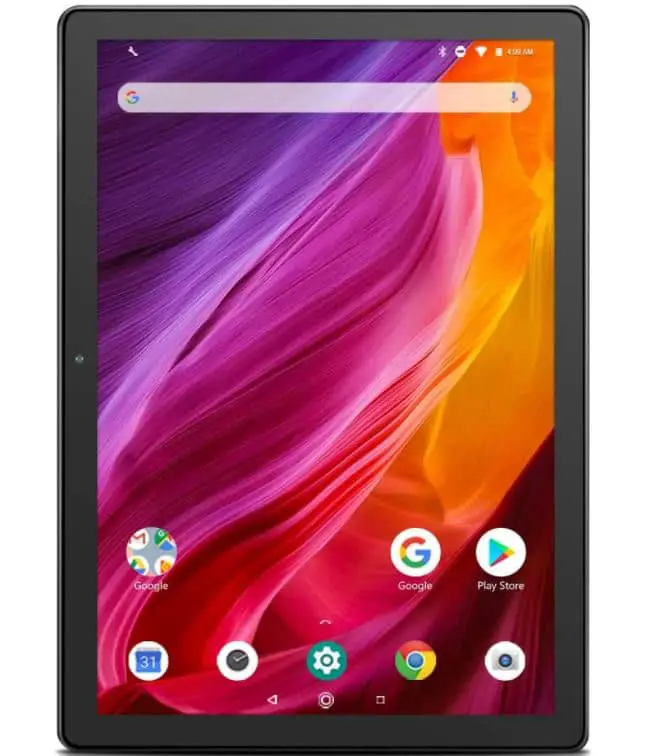
The screen of the device is admirable, with a 10-inch display. The resolution of 1280×800 makes it stunning even in the dark. It is large enough and provides flawless visuals of movies, drama, files, and entertainment.
We also prefer the metal body of the device as it gives it a premium look. Similar to the Fire series we read above, this one also takes the top display spot. That, coupled with the operating system of android 8.1, gives you all you want.
A distinct feature of this device is the expandable storage space of 128GB. You can load any files, including reading, audio, and video. The monitor makes it a superb option to view it from any angle.
It has a micro HDMI interface that helps you sync with other devices. You can support charging as well as transmission of data using the micro USB. Users can now have excellent apps from the play store.
It is because of the GMS certified by Google. We loved using the operating system, which provides the flawless movement with 1.3 GHz. The processor is an MTK 64-bit Quad Core CPU coming with a memory of 2GB RAM.
Using these features, you can do about anything you want with the tablet with an HDMI input port. The device is priced at less than $100 on Amazon. If you are lucky, you may find it for a lower price if you keep looking.
Does it come with any drawbacks? Yes, we felt the battery duration was a giveaway with just 5 hours of working.
Pros:-
- The device is reasonably priced.
- The viewing angles of the 10-inch monitor are stunning.
- The tablet comes with a robust design.
- It comes with a powerful processor and memory.
- It has a GPS that you can use during travel.
Cons:-
- The battery duration of the device was a slight disappointment.
The Dragon Touch K10 tablet should be on your list of purchases this year if you want a feature-rich device. It has a solid design, a powerful operating system, and excellent storage space.
If you are okay with the 5-hour working battery time, you might want to place your order.
6. Elecrow 10.1 Inch Raspberry Pi Screen
The Elecrow 10.1 Inch Raspberry Pi screen is a stunning make from ELECROW. This is a trendy brand in the US. We will read more about it and get to know it better.
It comes with a VESA wall mount pattern that helps you to mount your LED screen.
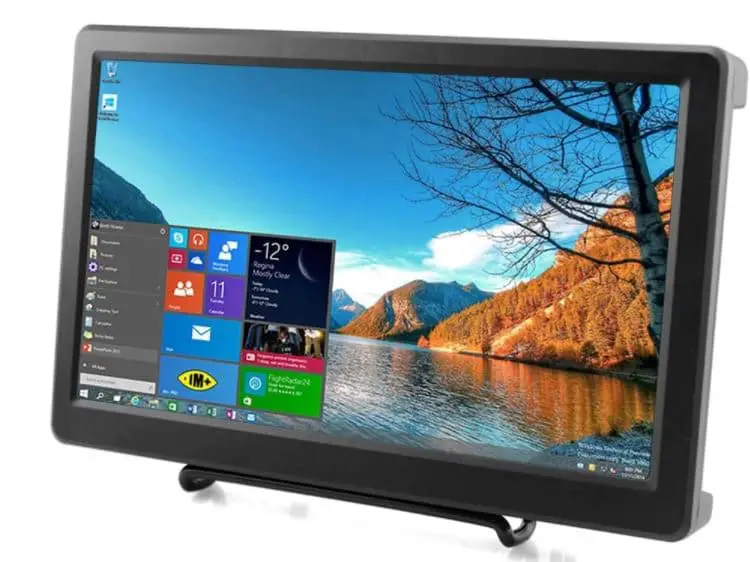
This enables you to view the monitor conveniently and practically. Additionally, this helps in saving space and provides flawless vision.
With Flicker-less technology, say good-bye to annoying screen flickering, and with a blue light filter, you’re shielded from eye-straining blue light.
You may want to use 5mm-8mm M3 screws. The display is good at 1920×1080 resolution. It offers you a clear picture. The screen is also fitted with IPS LED technology, bringing you a marvelous color experience.
We also liked the audio quality of the Raspberry Pi screen. The device can provide ample support as it comes with built-in exceptional loudspeakers. Users have commended the functionality of WiiU XBOX Raspberry Pi 4.
You can connect your devices using the HDMI input. The device comes priced reasonably at less than $120. We felt the device is suitable for students, travelers, and gaming experts.
Pros:-
- The display is flawless, coming at 1920×1080 resolution.
- You can use the mount to place it up and view it from any angle.
- This is a 10.1-inch screen that offers you a comprehensive view.
- The audio and video quality are exceptional.
- It can be used with many devices.
Cons:-
- The battery life could have lasted for more hours.
Elecrow 10.1 Inch Raspberry Pi Screen is a must-have tablet in your baggage. The device is lightweight, portable, comes with an abundance of features, and is affordably priced. For a comfortable journey and work environment, this is a definite yes.
7. ZSCMALLS Portable Monitor 15.6 Inch
Fourth on our list of tablets with HDMI input is the ZSCMALLS Portable Monitor 15.6inch. This product is from the makers of ZSCMALLS. As you can see from the name, the tablet is a 15.6-inch monitor.
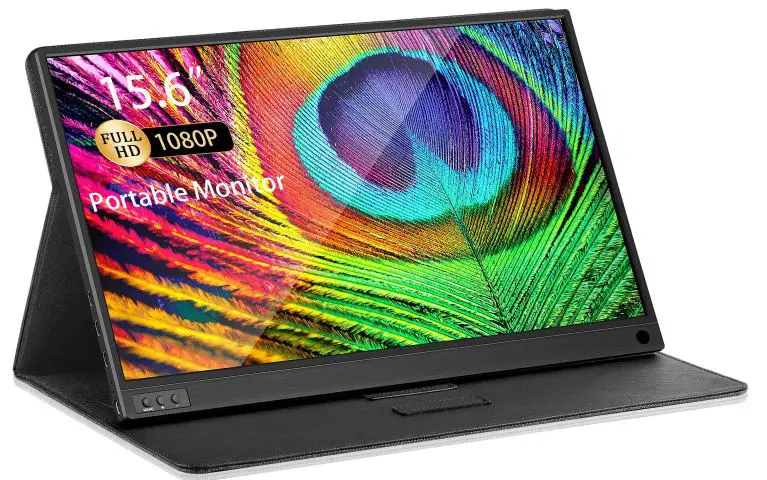
That is large enough to use as your laptop or PC monitor. Besides that, it comes with a wide range of features that we will read about. First is the visual quality of the tablet.
The screen is an ultra-portable matte finish monitor that provides a matchless 1920 x 1080 resolution visual.
It also comes with an IPS screen weighing only less than 1.5 lbs. The tablet is simple and easy to move around with. This device comes with a plug and plays feature. All you need to do is plug in the monitor and use it.
Graphic designers, website developers, and a host of other users can consider having a second-screen alternative to this. The makers have also provided you with a leather exterior for elegance and protection.
Users can make a fold and use it also as a stand. We were pleasantly surprised that it can be used on various devices like PCs, laptops, PS4, Xbox, etc. In America, you are provided with a money-back guarantee 30-day scheme.
The ZSCMALLS Portable monitor is priced well at less than $140. You will also get blown away by the audio quality. The dual speakers are powerful enough for a large room. This is suitable for presentations during client meetings.
Pros:-
- The monitor size is 15.6inch which is large enough.
- The display is flawless at 1920 x 1080 resolution and offers clear pictures.
- It is lightweight and portable, coming at only 1.5 lbs.
- It is compatible with a barrage of devices like PC, laptops, and smartphones.
- The audio quality is also second to none.
Cons:-
- Users feel that the HDMI input cable is slightly short.
ZSCMALLS Portable Monitor 15.6inch does not have to be just an extension screen. The device comes with dozens of extremely useful functionalities for students and designers.
It is well-priced, can be used with several devices, and has an exceptional battery duration.
8. Android 9.0 Pie Tablet 10-inch
This is another exciting find in our search for a tablet with HDMI input. We bring to you the Android 9.0 Pie Tablet 10-inch. This MaiTai tablet is one of the finest products we have seen in the market for a long time.
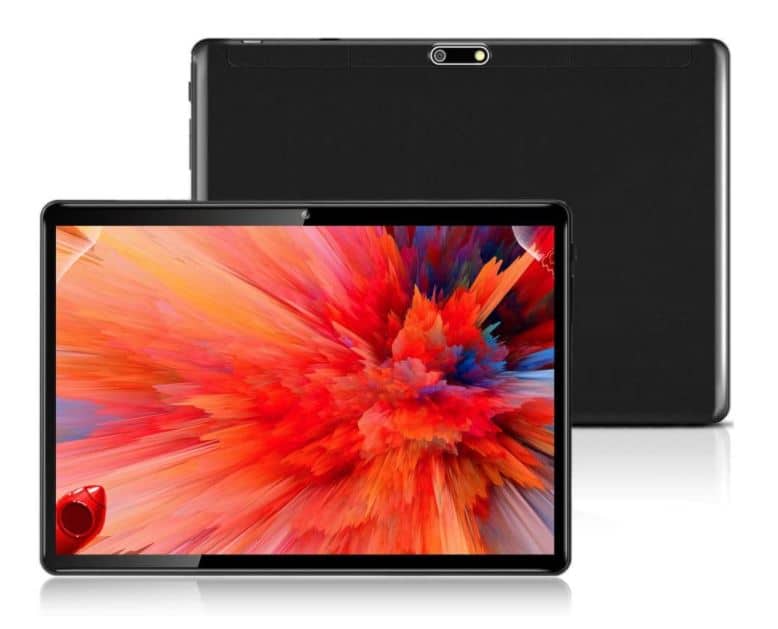
That is because it comes with everything you want. The device has a dual sim card slot available. You can make phone calls, use the internet on the go, and use two sim cards. We liked the 10-inch screen having an IPS touch display.
The tablet has 1280×800 resolution HD and runs on the Android 9.0 Pie operating system. The memory of the tablet is peerless, with 4GB RAM. This helps in quick loading. We preferred the connectivity of the tablet as it runs sublimely on Wi-Fi.
You can use the microSD card for an additional 64GB of space. The battery duration was good at 6 hours. A noteworthy feature here is the fact that you can use 40 languages. The user interface is also simple.
The manufacturer offers you with warranty and customer support. It is priced reasonably well at less than $120. If you keep track of the product on Amazon, you may be lucky enough to have discounts.
Pros:-
- It has a large screen of 10.1inches that is good enough for gaming, working, and movies.
- The image quality is first-rate, with a 1280×800 resolution.
- It comes with a dual sim card slot.
- The operating system is powerful with android 9.0 pie.
- The storage space is impeccable, with 64GB.
- It has a robust battery that can work for 6 hours.
Cons:-
- Users felt that the software was slightly slower.
Android 9.0 Pie Tablet 10-inch is one of the best HDMI tablets in the market today. You might want to buy the device if you want a good quality screen, decent battery life, and a cheap product.
9. Fusion5 10.1″ Android 8.1 Oreo Tablet
Fusion5 10.1″ is a 10.1-inch tablet with extreme visuals thanks to flawless IPS screen technology.

You can view the screen from any angle to receive exceptional clarity. The display panel is thinner than most devices, and the resolution is 1280×800 HD.
The rear part of the tablet is made from anti-scratch material that ensures it does not get scratched easily.
This helps in the durability of the tablet. GMS is certified with a second-to-none android 8.1 operating system that gives you effortless performance. The storage space is adequate, with a microSD card of 128GB.
This workhorse of a device allows you to store audio, video, and reading documents. The Fusion 5 tablet is a matchless product for many activities. Does the tablet come with any flaws?
The storage space of 16GB might be its undoing. If you are somebody who needs more space, then you will have to look elsewhere. The tablet is priced cheaply at less than $90 and is one of our list’s cheapest.
Overall, it is quite a bargain for the decent features embedded in it.
Pros:-
- The 10.1-inch screen is large enough for a wide range of activities.
- The rear part of the tablet comes with an anti-scratch coating.
- IPS technology offers smashing visuals.
- It is cheap and affordable for students.
- It comes with a 1-year warranty for American buyers.
Cons:-
- The camera quality could have been improved at 0.3MP.
Fusion5 10.1″ Android 8.1 Oreo Tablet is a fantastic device that can help your cause. It comes with matchless features and good battery life. This should be on your desk if you are alright about the low storage space.
10. VANKYO MatrixPad S10 10-inch tablet
A famous brand makes VANKYO MatrixPad S10 10-inch tablet in the US, VANKYO. They have been around for quite a while to garner a good reputation. One word that relates to the device is the champion.
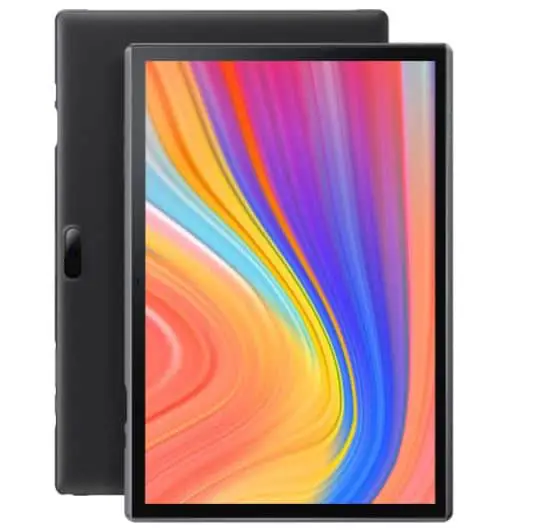
The tablet comes with a mighty quad-core processor. It is coupled with the memory of 2GB RAM. You can now work seamlessly, play games, and watch movies peacefully.
The device has the operating system of android 9.0 pie that comes loaded with essential Google apps.
The IPS monitor of the tablet is tremendous. It comes with a 1280×800 resolution, which offers you vibrant images. You can now enjoy the read mode and view movies with eye health. This feature ensures that it is adjusted to the backlight in your reading environment.
It comes with two front box speakers and is portable. The 32GB memory can be increased to 128GB using the microSD card. The product is affordable at less than $100. On the whole, if you are looking for a solid but cheaply priced device, this VANKYO tablet is yours.
Pros:-
- The display is a 10.1-inch monitor that offers you an intense display.
- The screen comes with a 1280×800 resolution.
- The performance is powerful because of the android 9.0 pie.
- Sufficient memory is provided at 2GB RAM.
- The storage and battery duration are acceptable.
- The setup of the tablet is simple.
- It comes with an 8-hour duration battery.
Cons:-
- The device comes with an average camera.
VANKYO MatrixPad S10 10-inch tablet is your ideal option when you search for a cheap tablet with HDMI input that works sublimely, comes with powerful display technology, and is priced well. You really cannot ask for more than this.
11. Gechic 1503I 15.6-inch
Gechic 1503I 15.6-inch is a massive portable touchscreen device with some remarkable features. This ultra-light and portable device comes with a projective touch screen that can accurately understand your gesture.
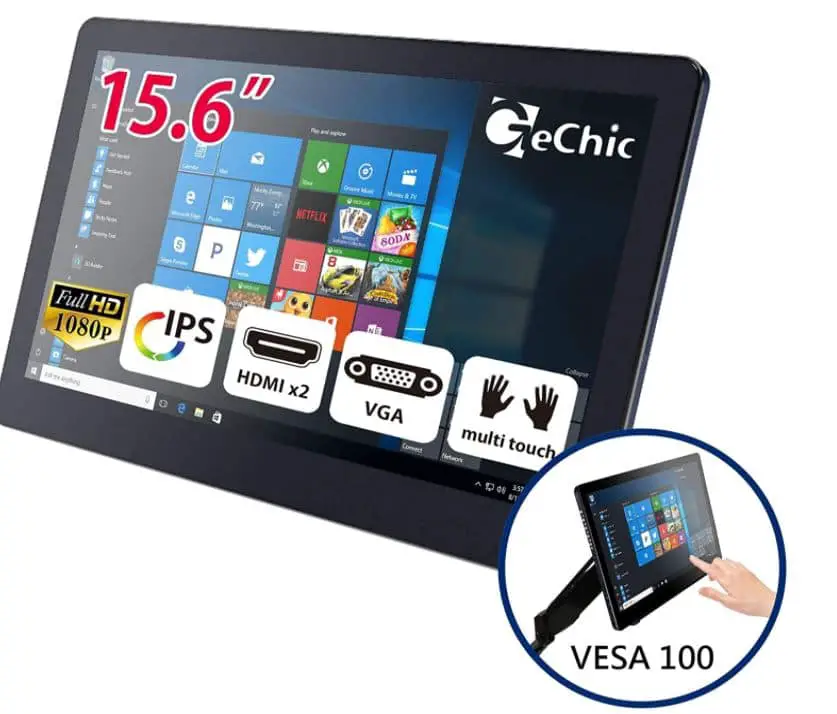
It weighs little more than 1000g and is slightly more than 1cm thick. It means you can take the Gechic 1503I during your travels. The device comes with a sublime 1080 Full HD IPS monitor.
You are provided with crystal clear pictures. The detachable stand helps you to place the monitor according to your usage. Using that, you can view the images as you want. The device is priced slightly higher at less than $350.
Pros:-
- The tablet comes with a huge 15.6-inch monitor.
- You can use it for a variety of tasks.
- It comes with IPS display technology.
- The tablet can be fitted with a detachable stand.
- It is portable because it weighs only 1000 g.
Cons:-
- The price of the tablet is high.
The device comes with IPS display technology and is fitted with a detachable stand. Gechic 1503I 15.6-inch is an expensive tablet, but you can place your order today when you are keen to amass some top-notch embedded features.
12. Lenovo Smart Tab P10 10.1.”
Lenovo Smart Tab P10 10.1inch is our final device in the review. Smart Tab was the winner of the Innovation Award last year in 2022. The Qualcomm Snapdragon processor powers this tablet.
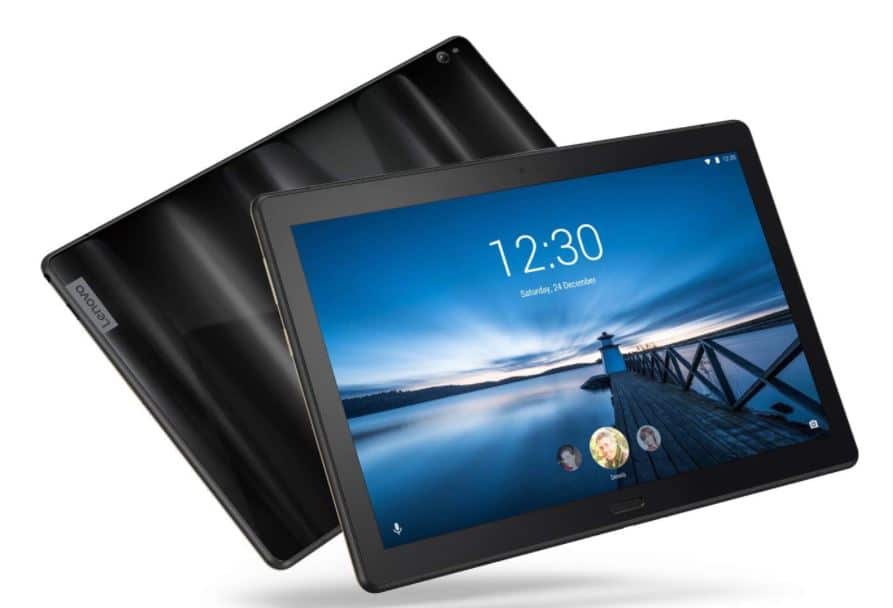
It comes with a memory of 4GB RAM and can be expanded up to 256GB using a microSD card. The tablet has a matchless display with four front speakers with Dolby Atmos. The operating system is robust with the android O.
The device has a smart screen with Alexa when docked. It enables you to control all your smart home devices automatically. This device is priced expensive at less than $320. We liked that you could access hundreds of Alexa tasks using the device.
Pros:-
- The tablet comes with a powerful Qualcomm Snapdragon processor.
- The storage space can be extended up to 256GB with a microSD card.
- The memory is good at 4GB RAM.
- The audio quality is exceptional thanks to 4 front speakers with Dolby Atmos.
- It works with the latest Android O operating system.
Cons:-
- It is priced on the steep side.
Lenovo Smart Tab P10 10.1inch is the ideal option for you when you are looking for a robust, powerful, and unparalleled product. The price factor can be a downer, but you ought to be ready to shell out the money when you want performance.
Factors to know when you choose the best tablet
So, how do you know which tablet is your best option? How do you ensure that you are getting a bang for your money? We have made it simpler for you by highlighting key features you want to note before purchasing.
- The screen size of your tablet
The tablets usually have a screen size of 8 inches to 13 inches. In some cases, they can be more than that. However, the ideal monitor would be 10 inches to provide portability. This is for those of you looking for a tablet for traveling.
- The battery life of your tablet
On that note, you want to use a table that can last for 8 hours or more on a single charge during travel. Usually, tablets must be able to hold up for several hours. You do not want to pick a device that lasts only 2-5 hours.
- The storage space of your tablet
The storage space on your new device should be capable of storing sufficient files. Normally, they can hold 32GB or more. Most of the tablets come with extended storage space. Some of them can even come with a microSD card.
This helps you to store music, video, document, and other forms of data. You would be stunned by the advantages of using a tablet with HDMI input for the content displayed on the device. These HDMI cables are your best choice for connecting laptops, TV, and projector.
For music lovers, you can connect it to your audio system and listen to your favorite song. That said, purchasing tablets with HDMI input is worth your time and money.
📗FAQs📗
Do any tablets have HDMI out?
10.1 Inch Android Tablet PC Fusion5, Fusion5 104Bv2 PRO Android Tablet PC, Dragon Touch Notepad K10 Tablet, Android Tablet 10 Inch, Upgraded Dragon Touch Notepad K10 Tablet, Microsoft Surface Pro 10.6-Inch Tablet, Tablet 8 Inch Android 11, etc. are some of the top options.
Can a tablet be used as an HDMI monitor?
Connecting the tablet to the monitor using cables or adapters via the tablet’s video port is possible.
It can be done with USB-C on one side and VGA, HDMI, or DVL on another. One must only connect the cable or adapter to the tablet and the HDMI cable to the monitor.
How can I add HDMI to my tablet?
You can do so by plugging in the USB-C end of the adapter to the tablet.
How do I know if my tablet supports HDMI?
The best way is to dial the manufacturer and ask if the device supports HDMI. You can also look through the SlimPort-supported and MHL-enabled devices list to know more.
How can I use my Android as an HDMI monitor?
USB-C to HDMI adapter is the best option. If your device includes a USB-C port, plug the adapter into the phone and plug the HDMI cable into the adapter to connect the TV via cable.
What tablets have HDMI inputs?
The Lenovo ThinkPad X1 Tablet, the Samsung Galaxy Tab S6, and the Microsoft Surface Pro are just a few tablets with HDMI inputs.
The Asus Chromebook Tablet CT100, the Acer Iconia W700, and the HP Elite x2 1012 are further tablets having HDMI ports. Some of these tablets might need an adaptor to connect to an HDMI input.
Are there tablets with HDMI ports?
The Lenovo ThinkPad X1 Tablet, Samsung Galaxy Tab S6, and Microsoft Surface Pro are a few tablets with HDMI connectors. The Acer Iconia W700, the HP Elite x2 1012, and the Asus Chromebook Tablet CT100 are further tablets having HDMI connectors.
Can I use a tablet as an HDMI monitor?
Yes, a tablet can function as an HDMI monitor. You will need a tablet with an HDMI output port and a display with an HDMI input port to perform this.
After that, use an HDMI cable to attach the tablet to the screen. The display should be able to display the content that is being shown on the tablet’s screen once the connection has been made.
How do I know if my tablet supports HDMI?
You must check your tablet’s specifications to find out if HDMI is supported by it. A list of the ports and connections available on most tablets will usually include information about whether or not the tablet has an HDMI port.
Usually, you may get this information by searching online for the model number of your tablet, visiting the manufacturer’s website, or reading the user manual that came with it.
If you can’t discover this information, you might also be able to find an HDMI port by looking at the tablet’s back.
Can I connect HDMI cable from Samsung tablet?
Although it will depend on your precise type of tablet, it is feasible to connect an HDMI cable to a Samsung tablet.
The Samsung Galaxy Tab S6 is one of the Samsung tablets that include an HDMI port for connecting an HDMI cable. Other devices, like the Samsung Galaxy Tab A, lack an HDMI connector and necessitate an adaptor to connect to an HDMI display.
Find the HDMI port on a Samsung tablet before using an HDMI cable to connect it. Usually, this is found on the device’s back or side. After finding the port, you can attach the HDMI cable’s one end to the port and the other to the HDMI input on display.
Please note that you may need to change your tablet’s display settings and the display itself to guarantee that the image is being displayed correctly.
Is Galaxy Tab A compatible with HDMI?
An HDMI cable cannot connect the Samsung Galaxy Tab A directly to an HDMI display because it lacks an HDMI connector. However, alternate ways exist to link the Galaxy Tab A to a display.
Utilizing a Chromecast or Miracast adapter is one possibility for a wireless display adaptor. These adapters can be used with tablets without HDMI ports and enable wireless connection to displays.
Utilizing a device that has a USB port and enables USB connections to displays is an additional choice. A USB-to-HDMI cable can connect a tablet to an HDMI display utilizing some gadgets, such as the MHL (Mobile High-Definition Link) adapter.
Do Lenovo tablets have HDMI ports?
While some Lenovo tablets lack HDMI ports, others do. Your particular Lenovo tablet model will determine how it works.
For instance, the HDMI connector on the Lenovo ThinkPad X1 Tablet enables you to use an HDMI cable to link the tablet to a display. The Lenovo Yoga Tab 3 Pro and Lenovo Ideapad Miix 700 are further Lenovo tablets with HDMI connectors.
The Lenovo Tab M10, on the other hand, lacks HDMI connectors and must be connected to an HDMI display using an adaptor.
Other Lenovo tablets, however, do include HDMI ports. You may look at its specifications to know whether your Lenovo tablet includes an HDMI port.
What Android phones support HDMI out?
Several Android phones are compatible with HDMI output via the USB Type-C connection, such as:-
Samsung Galaxy S8, S8 Plus, S9, S9 Plus, S10, S10 Plus, S20, S20 Plus, and S20 Ultra
Google Pixel 2, Pixel 2 XL, Pixel 3, Pixel 3 XL, Pixel 4, and Pixel 4 XL
LG V30, V30+, V35, V40, V50, and V60
Oneplus 6, 6T, 7, 7T, 8, and 8 Pro
Can Android receive HDMI input?
The answer is no; Android devices cannot accept HDMI input. In contrast to receiving input from another device, Android smartphones are primarily made to output video and audio to an external display.
Although some Android smartphones come equipped with an integrated HDMI connector, these ports usually output video and music to an external display rather than accept input from other devices.
Some Android tablets, for instance, feature an HDMI connector that may be used to attach the device to a TV or monitor but they cannot accept HDMI input.
It may be necessary to utilize a different type of connection, such as a USB-C or USB Type-A connector, depending on the device and the available ports, if you want to connect an external device to your Android device and use the Android device as a display.
To stream video and audio from another device to an Android device, some Android devices also offer wireless connections. Examples of these connections are Miracast and Chromecast.
Are tablets with HDMI input available?
Today, you can find a multitude of tablets that come with HDMI input connectivity. All the major brands like Amazon, Dragon Touch, and Lenovo have produced tablets with these features. This is now an essential niche in the market.
In our list, you would have noticed devices of different makes having HDMI input.
What kind of tablet do you need to connect to a TV?
It depends on your TV make and port. The tablets come with a compatible HDMI input port to connect on most TVs in today’s market. If you are looking for wireless connectivity, you can use Chromecast.
What is the ideal price range for a tablet with an HDMI input port?
The right price for an HDMI input tablet would be between $80-$150. Of course, you have a wide range of devices available in the market. As you would have noticed, we have provided you with some of the most cost-effective tablets in the market.
Is a micro-USB to HDMI cable a good option?
Both are good and useful for connectivity purposes. Today, you can find tablets that mostly use the HDMI input port. They also use the micro-USB input for connections for the MHL adapter.
Conclusion
Those, as mentioned earlier, are some of the best options for you. The tablet was chosen based on screen size, storage space, battery duration, and, more importantly, price. Depending on your requirements and budget capability, you can select the tablet.
Undoubtedly, a tablet with HDMI input is a good investment because it can perform a barrage of activities. You can watch clear videos, listen to good-quality songs, and play games.
From a work point of view, you can give client conferences effortlessly and give impressive presentations. You have an abundance of choices to make. That does not mean that you choose the cheapest option that is available.
Instead, you may want to concentrate on the elements found on the tablet. This way, you can make your decision wisely. Take your time, and you can even do your research if you may have missed something we missed out on.






